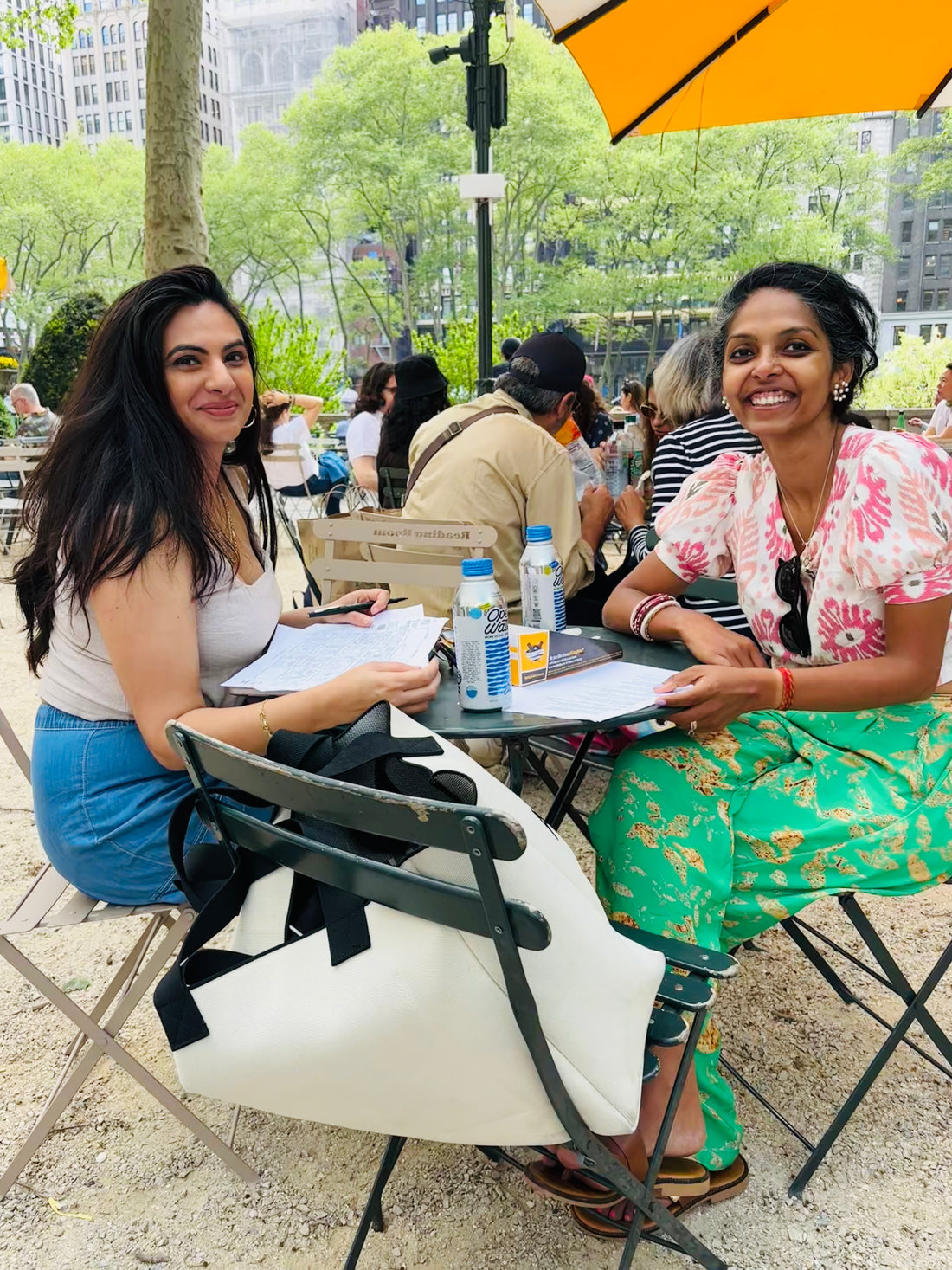
Part 2/4 Storyboarding Consent: Pausing the Rhythm of Holi - Behind-the-Book Series
This is part 2 of our 4-part Behind-the-Book long form series documenting the making of an English-Hindi picture book, Happy Hippotastic Holi!, for children ages 4-8 years old. Coming Holi 2026! PRE-ORDER today to unlock free goodies, and celebrate consent in celebrations.
In Part 1, I shared a simple truth: culture cannot cancel consent. Choices protect joy and help celebrations truly feel inclusive for everyone. Here in Part 2, I share how Natasha B. Padhiar and I wove that idea into the book's bones through storyboarding and pacing.
When we think of Holi, what comes to mind? A burst of color in the air. A rainbow of powders. Crowds of children and grown-ups covered head to toe in every shade imaginable. Children’s books are filled with these joyful scenes.
But there is another kind of Holi scene we wanted to hold space for. One where consent is ignored. And one where consent, choice, and care are celebrated alongside color.
A Holi where rhythm matches responsibility.
From First Draft to Flow
When Natasha received the manuscript, she began the way she always does: she printed it out, highlighted the conflict beats, and circled the moments of change.
She explained:
“Because the writing was done in rhyme, it was fairly easy to figure out that the text would land in doubles or quadruples. From there, I mapped which pages should be spreads, which should be singles, and where spot illustrations could give variety.”


When she shared it with me, I could see her vision, but I felt the conflict arc moved faster than the words I had written. The hippos went from pouting to playing, from conflict to resolution, in just a few turns of the page.
 In picture books, the page turn is as powerful as any line of text. It shapes how the rhythm of a story is felt. As the writer, I wanted the pauses I had imagined while writing to be visible too. An uncomfortable pause that gave children and adults alike a chance to sit with the weight of an ignored “no.”
In picture books, the page turn is as powerful as any line of text. It shapes how the rhythm of a story is felt. As the writer, I wanted the pauses I had imagined while writing to be visible too. An uncomfortable pause that gave children and adults alike a chance to sit with the weight of an ignored “no.”
I shared with Natasha:
“The first storyboard has a shorter conflict arc. I would like the story’s first half of the rhythm to slow down and sit in discomfort, especially when boundaries are ignored under the pretext of culture. We must add spreads to let children and adults feel the hurt before moving toward resolution.”
Natasha agreed and held space on the pages for readers to pause. That choice led to one of the book’s most powerful spreads.

Clouds of colors stand in stark contrast to the absence of respect for consent, choice, and care. It asks us to notice what is too often dismissed with the familiar phrase Bura na mano, Holi hai! or “Don’t be offended, it’s Holi!”
Movement as Emotional Storytelling
 Holi is motion. Powders tossed, water sprayed, feet moving to the drumbeat. But in our story, movement was not only about action. It also became a way to show emotion.
Holi is motion. Powders tossed, water sprayed, feet moving to the drumbeat. But in our story, movement was not only about action. It also became a way to show emotion.
Natasha told me she studied both joyful celebrations and bullying scenes:
“If there was a hippo covering their face, I wanted that to be a focal point, a signal they weren’t comfortable. That single pose could guide the whole page’s layout.”

These subtle details, a hippo turning away, another leaning too close, a hesitant hand raised, are small but powerful lessons in body language. They help children practice noticing when someone else is not okay.

In picture books, illustrations are often the first place children learn to read emotions. Here, movement became a language of empathy.
When Beauty Competes with Emotion
One of Natasha’s earliest ideas was to cover the hippos themselves with delicate white rangoli-inspired patterns from Indian textiles such as kalamkari, bandhani, and madhubani. As the colors of Holi were thrown, these motifs would bloom across their skin.



I loved the idea. It was vibrant and rooted in cultural memory. Natasha had even researched and gathered more than ten motifs.
But as the spreads developed, I started to feel the patterns were distracting from the hippos’ emotions. And this book is meant to center social-emotional learning.
 I told Natasha:
I told Natasha:
“The textures compete with the emotional cues of the hippos. Children need to be able to see feelings first.”
I worried she might feel disheartened and told her so while sharing feedback. She put my worries to rest and responded with openness. Natasha took those same motifs and wove them into the environment. The hippos stayed simple, their emotions clear, while the world around them slowly unfolded in cultural richness as we see them making space for consent, choice, and care.

Looking Ahead
The hardest part of storyboarding Happy Hippotastic Holi! was not color or conflict.
It was capturing the pauses to hold space for the nuance between them.
In Part 3 of Behind-the-Book Series, I will delve deeper into the design choices that allowed us to navigate nuance and bring in the bilingual texture of the story. We will also share why hippos are the perfect vessels to model consent and care.

🌸 Thank you and shukriya, for reading til the end. We’re curious about your thoughts on our choice to forego textile motifs on the hippos so young explorers can focus on emotional cues. Please share them in the comments below and preorder your copy here.
💌 Join my newsletter, EXPLORERS, to follow the journey. Discover diverse, inclusive, and experimental storytelling rooted in joy, inclusivity, and exploration.

